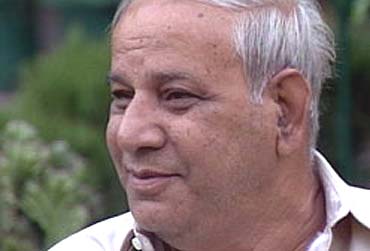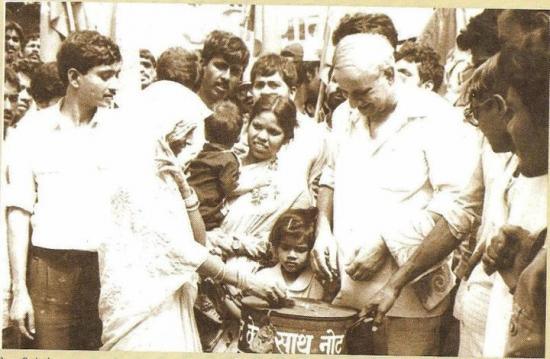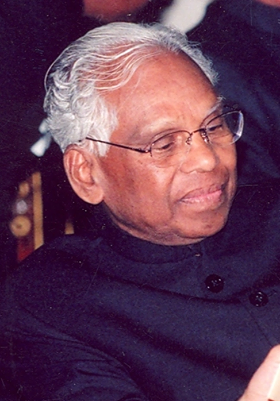by Kanshi Ram
Continued from here.
Part—I
Prelude to Poona Pact
~~~~
The Initial Efforts
 From the very beginning of the 20th century, India witnessed great changes. In this changing India, the oppressed Indians were not to lag behind. The High Caste Hindus were fighting for Swarajya. The Oppressed Indians were struggling for self-respect. The slaves were shouting for freedom and self-rule, whereas the slaves of the slaves were creating counter-noise for relief from the age old bondage, serfdom and humiliations unknown to the rest of the world. The High Caste Hindus were building their organisation and developing techniques to coax the rulers, the British, for an early transfer of power into their hands. The depressed classes were getting frightened by the very thought of such a thing happening without relief for them and adequate safeguards for their honourable living in the future where their age old oppressors were to be the rulers of India.
From the very beginning of the 20th century, India witnessed great changes. In this changing India, the oppressed Indians were not to lag behind. The High Caste Hindus were fighting for Swarajya. The Oppressed Indians were struggling for self-respect. The slaves were shouting for freedom and self-rule, whereas the slaves of the slaves were creating counter-noise for relief from the age old bondage, serfdom and humiliations unknown to the rest of the world. The High Caste Hindus were building their organisation and developing techniques to coax the rulers, the British, for an early transfer of power into their hands. The depressed classes were getting frightened by the very thought of such a thing happening without relief for them and adequate safeguards for their honourable living in the future where their age old oppressors were to be the rulers of India.
For the untouchables and the depressed classes it was a welcome change, For centuries before that they had been the willing slaves of the High Caste Hindus. Why this sudden change on their part? This change was very much the outcome of the British rule. With the British as rulers of India, came the western education, western civilization and culture. This exposure to the western civilization and culture for a pretty long lime caused a new awakening amongst the depressed classes. As a result of the British rule many more factors became operative and induced all-round aspirations amongst the depressed classes of India.
During this period, we find the depressed classes up in arms against untouchability and unjust social order almost all over India. Looking at the map of India, from Punjab to Bengal, the Adi-Dharmis, the Jatavas, the Kureels, the Pasis, the Paswans and the Namo-shudras were restless and struggling for self-respect. Moving downwards, we find the Ahirwars, the Berwas, the Satnamis, the Mahars, the Adi-Andhras, the Adi-Karnatakas, the Adi-Dravidas, the Pulayas and the Ezwas and many more groups of the depressed classes revolting against the oppressive features of the Brahminical culture.
All these efforts of the depressed classes were yielding some results. Almost everywhere, the High Caste Hindus were making some compromises. How the Congress, the organisation of the High Caste Hindus was forced to pass the following resolution in the year 1917, shows the extent of the success of the efforts of the depressed classes.
The Congress resolution of 1917:
“This Congress urges upon the people of India the necessity justice and righteousness of removing all disabilities imposed by custom upon the Depressed Classes, the disabilities being of a most vexatious and oppressive character, subjecting those classes to considerable hardship and inconvenience.”
To win over the sympathy and the consent of the depressed classes to tide over the then prevalent situation the Congress was forced to pass that resolution. The passing of this resolution had been described by Dr. Ambedkar as a strange event. The helplessness of the Congress at that time, the mischief of passing that resolution, later inaction is described below in the words of Dr. Ambedkar :—
“Against this background the resolution passed by the Congress about the Depressed Classes in 1917 is obviously a strange event. The Congress had never done such a thing before although it had functioned for thirty-two years. It was even contrary to its declared policy.
Why did the Congress think it necessary to pass such a resolution in the year 1917? What made it take cognizance of the Untouchables? What did it want to gain? Whom did it want to deceive? Was it because of some ulterior motive? For an answer to these questions one must turn to the following resolutions passed by the Depressed Classes in the year 1917 at two separate meetings held in the City of Bombay under two different Presidents. The first of these meetings was held on the 11th November 1917 under the Chairmanship of the late Sir Narayan Chandavarkar. In that meeting the following resolutions were passed :-
“First Resolution- Loyalty to British Government and prayer for victory to the Allies.”
“Second Resolution carried at the meeting by an overwhelming majority, the dissentients being about a dozen, expressed approval of the scheme of reform in the administration of India recommended by the Indian National Congress and the All India Muslim League.”
“Third Resolution carried unanimously was: ‘As the population of the Depressed Classes in India considered Untouchable and treated as such, is very large, as their condition is very degraded owing to that treatment and as they are behind the rest of the people in point of education, being unable to secure fair opportunities for their improvement, this public meeting of the Depressed Classes strongly feels that in the scheme of reform and reconstitution of the Legislative Councils which Government may be pleased to adopt, due regard be paid to the interests of the said classes. This meeting therefore prays the British Government to be so gracious as to protect those interests by granting to those classes the right to elect their own representatives to the said Councils in proportion to their numbers.”
“Fourth Resolution unanimously carried at the meeting was: ‘That the Government be prayed for the adoption, with all convenient speed, of a compulsory and free system of education rendered necessary by the fact that the social elevation of any community depends upon the universal spread of education among its members and that degradation of the Depressed Classes is due to their illiteracy and ignorance.”
“Fifth Resolution carried unanimously was as follows :— ‘That the Chairman of this public meeting be authorised to request the Indian National Congress to pass at its forthcoming session a distinct and independent resolution declaring to the people of India at large the necessity, justice, and righteousness of removing all the disabilities imposed by religion and custom upon the Depressed Classes, those disabilities being of a most vexatious and oppressive character, subjecting those classes to considerable hardship and inconvenience by prohibiting them from admission into public schools, hospitals, courts of justice and public offices, and the use of public wells etc. These disabilities social in origin, amount in law and practice to political disabilities and as such fall legitimately within the political mission and propaganda of the Indian National Congress.”
“Sixth Resolution prays all Hindus of the castes other than the Untouchables and Depressed, especially those of the higher castes, who claim political rights, to take steps for the purpose of removing the blot of degradation from the Depressed Classes which has subjected those classes to the worst of treatment in their own country.”
The second meeting was also held in November 1917 a week or so after the first meeting. The Chairman was one Bapuji Namdeo Bagade a leader of the Non-Brahmin Party. At this meeting the following resolutions were unanimously adopted :—
“(1) Resolution of loyalty to the British throne.”
“(2) That this meeting cannot give its support to the Congress-League Scheme in spite of its having been declared to have been passed at the meeting of 11th November 1917 by an overwhelming majority,”
“(3) That it is the sense of this meeting that the administration of India should be largely under the control of the British till all classes and specially the Depressed Classes, rise up to a condition to effectually participate in the administration of the country,”
“(4) That if the British Government have decided to give political concession to the Indian Public, this meeting prays that Government should grant the Untouchables their own representatives in the various legislative bodies to ensure to them their civil and political rights.”
“(5) That this meeting approves of the objects of the Bahiskrit Bharat Samaj (Depressed India Association) and supports the deputation to be sent on its behalf to Mr Montagu”.
“(6) That this meeting prays that Government looking to the special needs of the Depressed Classes, should make primary education both free and compulsory. That the meeting also requests the Government to give special facilities by way of scholarships to the students of the Depressed Classes”,
“(7) That the meeting authorises the President to forward the above resolutions lo the Viceroy and the Government of Bombay”,
It is obvious that there is a close inter-connection between the resolution passed by the Depressed Classes at their meeting in Bombay under the Chairmanship of Sir Narayan Chandavarkar and the Congress resolution of 1917 on the elevation of the Depressed Classes. This inter-connection will be easily understood by adverting to the political events of the year 1917. It will be recalled that it was in 1917 or to be precise, on the 20th August 1917 the late Mr. Montagu, the then Secretary of State for India, announced in the House of Commons the new policy of His Majesty’s Government towards India, namely, the policy of “gradual development of self-governing institutions with a view to progressive realisation of responsible government in India as an integral part of the British Empire”. Leading Indian politicians were expecting some such declaration of policy on the part of His Majesty’s Government and were preparing schemes for changes in the constitutional structure of India in anticipation of such a policy. Of the many schemes that were formulated, there were two around which public attention was centred. One was called “the Scheme of the Nineteen”. The second was called ”the Congress- League Scheme”. The first was put forth by 19 elected additional Members of the then Imperial Legislative Council. The second was an agreed scheme of political reforms supported by the Congress and the League otherwise known as The Lucknow Pact. Both these schemes had come into existence in 1916, a year before the announcement made by Mr. Montagu.
Of the two schemes, the Congress was interested in seeing that its own scheme was accepted by His Majesty’s Government. The Congress with that purpose in view was keen on giving the Congress League scheme the status and character of a National Demand. This could happen only if the scheme had the backing of all communities in India. In as much as the Muslim League had accepted the scheme, the problem of securing the backing of the Muslim Community did not arise. Next in numbers came the Depressed Classes. Though not as well organized as the Muslim, they were politically very conscious as their Resolutions show. Not only were they politically conscious but they were all along anti-Congress. Indeed in 1895 when Mr.Tilak’s followers threatened to burn the Congress pandal if its use was allowed to Social Conference for ventilating social wrongs, the untouchables organized a demonstration against the Congress and actually burned its effigy. This antipathy to the Congress has continued ever since. The resolutions passed by both the meetings of the Depressed Classes held in Bombay in 1917 give ample testimony to the existence of this antipathy in the minds of the Depressed Classes towards the Congress. The Congress while anxious to get the support of the Depressed Classes to the Congress- League scheme of Reforms knew very well that it had no chance of getting it. As the Congress did not then practise- it had not learned it then- the art of corrupting people as it does now, it enlisted the services of the late Sir Narayan Chandavarkar, an Ex-President of the Congress. As the President of the Depressed Classes Mission Society he exercised considerable influence over the Depressed Classes. It was as a result of his influence and out of respect for him that a section of the Depressed Classes agreed to give support to the Congress-League Scheme.
The resolution as its text shows did not give unconditional support lo the Congress-League scheme. It agreed to give support on the condition that the Congress passed a resolution for the removal of the social disabilities of the Untouchables. The Congress resolution was a fulfilment of its part of the contract with the Depressed Classes which was negotiated through Sir Narayan Chandavarkar.
This explains the genesis of the Congress Resolution of 1917 on the Depressed Classes and its inter- connection with the Resolutions of the Depressed Classes passed under the Chairmanship of Sir Narayan Chandavarkar. The explanation proves that there was an ulterior motive behind the Congress Resolution. That motive was not a spiritual motive. It was a political motive.
What happened to the Congress Resolution? The Depressed Classes in their Resolution had called upon the “higher castes, who claim political rights, to take steps for the purpose of removing the blot of degradation from the Depressed Classes, which has subjected these classes to the worst of treatment in their own country”. What did the Congress do to give effect to this demand of the Depressed Classes? In return for the support it got, the Congress was bound to organize a drive against untouchability to give effect to the sentiments expressed in its Resolution. The Congress did nothing. The passing of the Resolution was a heartless transaction. It was a formal fulfilment of a condition which the Depressed Classes had made for giving their support to the Congress-League scheme. Congressmen did not appear to be charged with any qualms of conscience or with any sense of righteous indignation against men’s inhumanity to man which is what untouchability is. They forgot the Resolution the very day on which it was passed. The Resolution was a dead letter. Nothing came out of it.
Thus ended the first chapter in the history of what the Congress has done to the Untouchables”.
Please read the previous part here.To be continued.
[Courtesy: Internet Archive]










